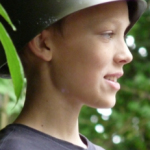
The primary characteristics of the highly able are intensity, sensitivity and overexcitability (Lind, 2001).
Most lists of characteristics of the highly able focus on the intellectual and academic aspects. Here we focus on the social, emotional and behavioural characteristics.
Webb et al. (2005) have constructed the following list based on relevant behaviours for the topic of misdiagnosis and dual diagnosis. Jim Webb kindly gave permission to reproduce the list on this site.
Behavioural Characteristics

James T. Webb
Great Potential Press SENG
- Unusually large vocabularies and complex sentence structure for their age
- Greater comprehension of subtleties of language
- Longer attention span; persistence, intensity and sensitivity
- Wide range of interests
- Highly developed curiosity and limitless questions
- Interest in experimenting and doing things differently
- Tendency to put ideas or things together in ways that are unusual, not obvious, and creative ( divergent thinking)
- Learn basic skills more quickly, with less practice
- Largely teach themselves to read and write as pre-schoolers
- Able to retain much information; unusual memory
- Have imaginary playmates
- Unusual sense of humour
- Desire to organise people and things, primarily through devising complex games
Want to find out if your child is high able?
You can fill in the ‘Characteristics of Giftedness Scale‘ for parents developed by Dr Linda Silverman of the Gifted Development Center, which will give you a direct indication. According to Dr. Silverman’s reasearch, parents are excellent identifiers of high-ability in their children: 84%of the children whose parents say that they fit 3/4 of the characteristics score at least 120 IQ (the superior range). Over 95% show high-ability in at least one area, but are asynchronous in their development or have learning difficulties, and their weaknesses depress their IQ scores.
Emotion Regulation
Multilevel Emotion Regulation Theory (MERT) is a holistic theory developed by Simone de Hoogh. The theory explains how neurodiverse (young) individuals and parents of neurodiverse children can develop emotional regulation skills and direct their energy towards self-chosen goals, and contribute to society.
PowerWood’s Community
Find understanding, tools and strategies that work in an understanding, respectful and compassionate Community.
PowerWood can be your and your families advocate and your second family.
Explore how joining our PowerWood community by becoming a member will benefit you and your family and what types of memberships are available.
Join our Community
Available to Members*
*Booking a one-off Free Introductory Talk of 45-60 minutes by Skype or FaceTime with Senior Consultant Simone de Hoogh is one of the benefits of being either a FreeBee PowerWood Community Member or a Friend PowerWood Community Member.
Book a FREE Introductory Talk with a Professional*
You can read more about PowerWood’s Consultancy Sessions, the Benefits of a Free Introductory Talk and PowerWood’s Consultancy Services Tiered Fee Structure.
*Overexcitability Test
OE (Overexcitability) is an element of a Developmental Theory –Theory of Positive Disintegration by Dabrowski- that is one of the underpinning theories of MERT (Multi-level Emotion Regulation Theory) developed by Simone de Hoogh. Overexcitability explains and allows us to look at ‘extreme’ behaviour as a valuable asset in our or our children’s life.
Find out if you or your child has OE (OverExcitability) as well
*Boundary Test
A HUGE thank YOU to the son and daughter of Ernest Hartmann’s who gave PowerWood permission to use and put the full academically approved questionnaire about the Boundary in the Mind on PowerWood’s website.
Find out how the Boundary in the Mind affects you or your child
